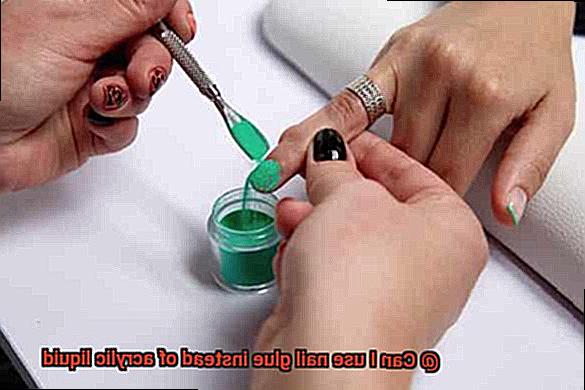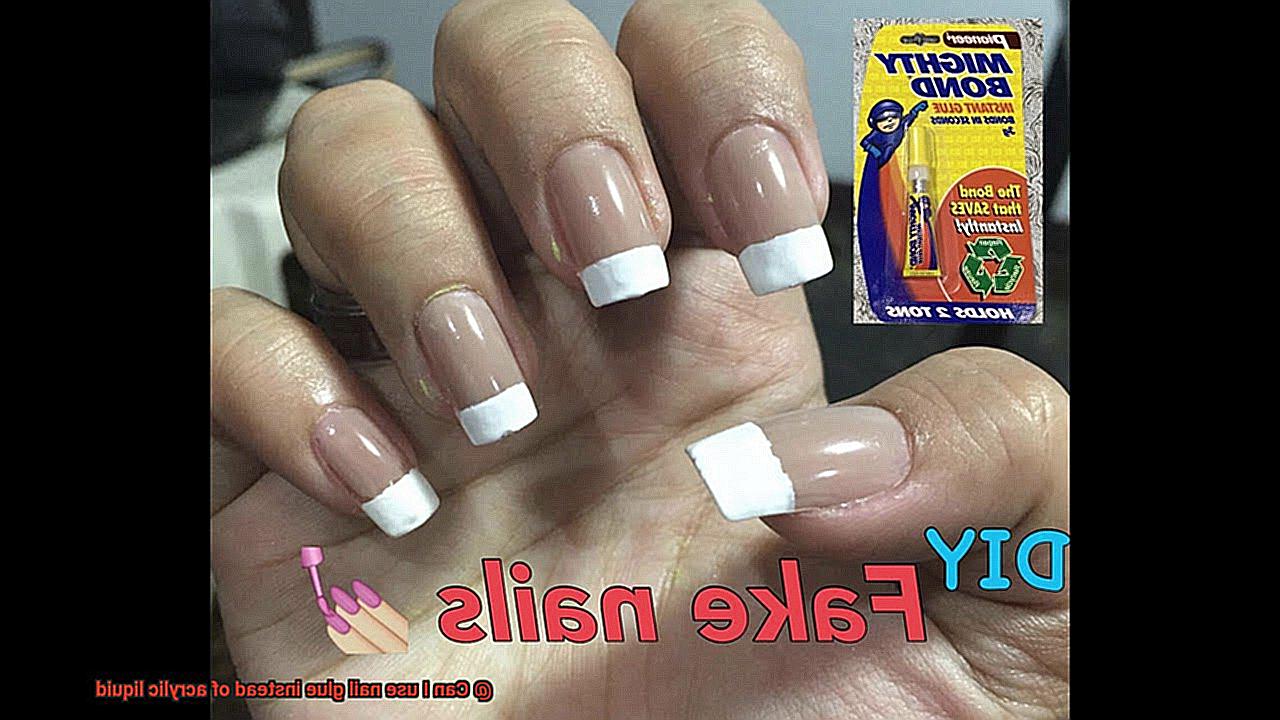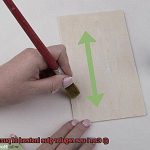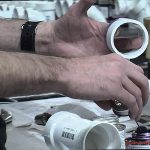Welcome to the world of nail enhancements, where a dazzling manicure is just a brush away. When it comes to achieving picture-perfect nails, two key players in the game are acrylic liquid and nail glue. These products may seem similar, but they each have their own unique role in the realm of nail care. In this article, we’ll uncover the distinctions between acrylic liquid and nail glue and determine whether they can be swapped like best friends at a slumber party.
Now, let’s take a laid-back approach for a moment. You might find yourself pondering if you can give acrylic liquid the boot and replace it with trusty old nail glue. After all, both substances stick things together like PBandJ sandwiches. But hold your horses. Before we dive into that question, let’s get acquainted with these products’ compositions and purposes.
From a professional standpoint, nail technicians will tell you that acrylic liquid (also known as monomer) is an absolute must-have for creating those gorgeous acrylic nails you’ve been drooling over on Instagram. When mixed with polymer powder, it sets off a chemical reaction that gives birth to a flexible mixture begging to be shaped into any form your heart desires. On the flip side, nail glue – often used for attaching artificial nails or fixing up natural ones – is an adhesive made from cyanoacrylate that offers speedy bonding without compromising durability.
Sure, nail glue might do its best to bond artificial nails together, but it simply doesn’t have what it takes to build up those stunning acrylic enhancements from scratch. Plus, let’s not forget about consistency and drying time – two factors that set these products apart like night and day. Acrylic liquid has been specially formulated to level itself out and dry at just the right pace for sculpting and shaping perfection. Meanwhile, nail glue sets faster than a cheetah on roller skates, making it perfect for quick fixes and temporary nail applications.
So, to sum it all up, before you even think about swapping acrylic liquid for nail glue, get to know the differences between these two powerhouses. While nail glue can provide a temporary bond for artificial nails, it simply can’t replace the magic of acrylic liquid when it comes to creating long-lasting enhancements. Nail technicians everywhere will tell you that using the right product for the job is key to achieving fabulous results. Stay tuned for our next post,
What is Nail Glue?
Contents
- 1 What is Nail Glue?
- 2 What is Acrylic Liquid?
- 3 Differences between Nail Glue and Acrylic Liquid
- 4 Can Nail Glue be Used Instead of Acrylic Liquid?
- 5 Potential Issues with Using Nail Glue Instead of Acrylic Liquid
- 6 Alternatives to Using Acrylic Liquid
- 7 Proper Application Techniques for Artificial Nails
- 8 Conclusion

If so, you’ve likely heard of the wonder product known as nail glue. This powerful adhesive is the key to securely attaching artificial nails or repairing natural nails. In this blog post, we will delve into the world of nail glue, exploring its composition, application techniques, and the importance it holds in achieving flawless nail looks.
What is Nail Glue?
Nail glue, also referred to as nail adhesive, is a specialized adhesive meticulously formulated for attaching artificial nails or mending natural nails. This remarkable adhesive is crafted from cyanoacrylate – a quick-drying and potent bonding agent that finds applications across various industries. With its thin, runny consistency, nail glue allows for easy and precise application. Upon contact with moisture, it swiftly sets in place, ensuring a secure hold.
How to Use Nail Glue:
Using nail glue is a simple process that requires precision for optimal results. Here’s a step-by-step guide:
- Nail Preparation: Begin by ensuring your nails are clean, dry, and free from any oils or residues.
- Apply Sparingly: Dab a minute drop of nail glue either onto the natural nail or the artificial nail tip, depending on your desired application.
- Press Firmly: Align the artificial nail or tip with your natural nail and assertively press them together to create a bond.
Excess Glue Removal: Wipe away any surplus glue using a cotton swab or tissue.
Allow Drying Time: Give the glue a few seconds to set entirely.
Why Nail Glue Matters:
Nail glue is an essential component for achieving enduring and resilient nail enhancements. When applied correctly and cared for properly, it can provide a secure hold that lasts several weeks. However, it’s vital to adhere to the manufacturer’s instructions to prevent any harm to your natural nails. Applying an excess amount of glue can lead to lifting or damage, so remember to use it sparingly.
Substitutes and Alternatives:
It’s important to note that nail glue cannot be substituted for other products like acrylic liquid. Nail glue and acrylic liquid possess distinct chemical compositions and properties, rendering them unsuitable alternatives for each other. If you prefer not to use acrylic liquid, alternative options such as gel-based systems or dip powders are available, which can yield similar results.
What is Acrylic Liquid?
If you’ve ever wondered what makes those fabulous nails possible, then prepare to be amazed by the magic of acrylic liquid.
So, what exactly is acrylic liquid? In its simplest form, it’s a magical elixir that transforms your nails from dull to dazzling in no time. This liquid gold is an essential component in the application of acrylic nails, giving them that flawless finish we all adore.
But what’s the secret behind this marvelous elixir? Acrylic liquid is a carefully crafted mixture of two key ingredients: monomer and polymer. These dynamic duos work together like a match made in heaven, creating a bond that’s stronger than super glue (well, almost.).
Let’s dive deeper into the fascinating world of these ingredients. First up, we have monomer. This liquid substance has a knack for evaporating quickly and serves as the adhesive powerhouse within acrylic liquid. It forms a strong connection between your natural nail and the artificial one, acting as the ultimate matchmaker for your real and fake nails.
On the other hand (no pun intended), we have the polymer. This powder-like substance brings some muscle to the mix, giving your acrylic nails durability and strength. When combined with the monomer, a chemical reaction called polymerization takes place. The polymer particles eagerly absorb the monomer, expand, and transform into a solid mass. Voila. You’ve got yourself hardened acrylic goodness right at your fingertips.
But wait, there’s more. Acrylic liquid also contains special additives that add an extra touch of magic. These little wonders control the speed of polymerization (because nobody likes a rush job.) and prevent premature drying or yellowing of your fabulous acrylics.
Now, here’s a tip for all you nail divas out there: not all acrylic liquids are created equal. Different brands may have slight variations in their formulations, resulting in differences in performance and durability. To ensure your nails slay the game, opt for a high-quality acrylic liquid from a reputable brand.
Differences between Nail Glue and Acrylic Liquid
When it comes to nail enhancements, two products often come into play: nail glue and acrylic liquid. While they both serve a purpose in the nail industry, they have distinct differences that make them suitable for different applications. So, if you’re curious about what sets these products apart, keep reading.
Composition is one of the key differences between nail glue and acrylic liquid. Nail glue is a cyanoacrylate adhesive, known for its strong bonding properties. It’s typically used to attach artificial nails or repair natural nails. On the other hand, acrylic liquid is a monomer solution that is mixed with polymer powder to create acrylic nails. This chemical reaction creates a solid nail extension that is durable and long-lasting.
The application process also differs between the two products. Nail glue is usually applied directly onto the nail surface or artificial tips using a brush applicator. It dries quickly when exposed to air, making it ideal for quick fixes or temporary repairs. Acrylic liquid, however, requires a specific technique and tools. It needs to be mixed with acrylic powder to form a paste-like consistency, which is then applied onto the nails using a brush. This process requires more time and precision.
Durability is another factor to consider. Acrylic nails created with acrylic liquid tend to be stronger and longer-lasting compared to those created with nail glue. The chemical bond formed by the acrylic liquid creates a solid structure that can withstand daily activities. Nail glue, on the other hand, is best used as a temporary fix or reinforcement for acrylic nails.
It’s important to note that nail glue should never be used as a substitute for acrylic liquid when creating full sets of acrylic nails. The two products have different purposes, and using nail glue instead of acrylic liquid can result in an inferior and less durable nail enhancement.
Both nail glue and acrylic liquid should be used with caution and in well-ventilated areas. They contain chemicals that may cause skin irritation or allergic reactions in some individuals. Therefore, it’s essential to follow the instructions and take necessary precautions when using these products.
Can Nail Glue be Used Instead of Acrylic Liquid?
Well, let’s cut to the chase – while it may appear alluring, professionals in the industry do not recommend it. Let’s explore why.
First and foremost, let’s analyze the fundamental disparities between nail glue and acrylic liquid. Nail glue is a fast-drying adhesive that forges a robust bond between your natural nail and the artificial tip or extension. On the flip side, acrylic liquid is a monomer that, when blended with polymer powder, begets those stunning acrylic nails we all adore.
Now, you might be wondering why substituting nail glue for acrylic liquid is a big no-no. Well, here are a few reasons to mull over:
- Lack of strength and durability: Nail glue simply lacks the properties possessed by acrylic liquid. It fails to provide the necessary strength and durability required for long-lasting nail enhancements. Opting for glue instead of acrylic liquid may lead to lifting, cracking, or even breakage – undoubtedly undesirable outcomes.
- Uneven application and instability: Since nail glue isn’t formulated to construct a robust structure, you may end up with an uneven application or an unstable nail enhancement. Trust us, nobody desires wonky nails.
- Flexibility and control: Acrylic liquid offers more flexibility and control during the application process. It can be shaped and molded to create various nail shapes and lengths, while nail glue lacks this versatility.
- Chemical reaction magic: Acrylic liquid undergoes a chemical reaction when mixed with polymer powder, resulting in a hardened and durable manicure. Unfortunately, nail glue lacks this enchanting power.
So, what’s the bottom line here? Adhering to professional guidelines ensures safe and long-lasting nail enhancements. Employing appropriate products and techniques guarantees that you flaunt those stunning nails without any worries. Always consult a professional nail technician and adhere to the recommended products for optimal results.
In conclusion, while nail glue may be suitable for quick fixes and temporary repairs, it is not a viable substitute for acrylic liquid when it comes to nail enhancements. Let’s reserve the glue for arts and crafts and let acrylic liquid work its magic on our spectacular nails.
Potential Issues with Using Nail Glue Instead of Acrylic Liquid
While it may seem like a convenient and cost-effective solution, there are several potential issues that you need to be aware of. In this article, we will explore the risks associated with using nail glue, including reduced adhesion and durability, difficulties in achieving a professional finish, long-term damage to the nails, and potential health hazards. Before you reach for that bottle of nail glue, let’s dive into the pros and cons of this alternative.
Adhesion and Durability:
Nail glue is designed for temporary repairs or attaching nail tips, while acrylic liquid is formulated to create a strong bond between the natural nail and the acrylic product. Opting for nail glue instead of acrylic liquid may result in reduced adhesion and durability, increasing the risk of lifting or breakage.
Application and Finish:
Acrylic liquid is renowned for its self-leveling properties, seamlessly blending with the natural nail and allowing for easy sculpting of the desired shape. Conversely, nail glue can be thicker and more difficult to control, resulting in a less professional-looking finish. Achieving a smooth and even application with nail glue may prove challenging, especially for beginners.
Long-Term Damage:
Regular use of nail glue can weaken natural nails over time. The chemicals in nail glue, such as cyanoacrylate, can make nails brittle and prone to breakage. Acrylic liquid, when properly applied and cured, forms a hardened layer that provides protection and strength to natural nails.
Health Hazards:
It’s crucial to consider the potential health risks associated with using nail glue. The strong chemicals in nail glue can cause skin irritation, allergic reactions, or respiratory problems if used improperly or excessively. Acrylic liquid is formulated with ingredients specifically designed for use on nails, and when used as directed, is generally considered safe.
Alternatives to Using Acrylic Liquid
Well, you’re in luck. In this blog post, we will explore different options to replace acrylic liquid and discuss their pros and cons.
Gel Systems:
Gel systems have gained immense popularity in recent years due to their flexibility and natural look. Instead of using a liquid and powder combination, gel systems rely on a gel base that is cured under a UV or LED lamp. The result? Lightweight and flexible nail enhancements that are easy to apply and perfect for those who prefer a more natural feel. However, keep in mind that gel systems may not be as durable as acrylic liquid and may require more maintenance and touch-ups.
Polygel Systems:
Polygel is a relatively new innovation that combines the best qualities of both acrylic and gel systems. It comes in a tube form and is applied with a brush, similar to how acrylic liquid is used. The beauty of polygel lies in its ease of use, as it does not require mixing like acrylic liquid. It also cures under a UV or LED lamp, resulting in strong and long-lasting nails. However, be prepared for a steeper learning curve compared to other alternatives, as it may take some practice to achieve desired results.
Nail Glue:
Nail glue is typically used for applying artificial nails such as press-on nails or nail tips. While it can be used to adhere acrylic powder to the natural nail, it is not recommended for long-term use. Nail glue is easily accessible and can provide a quick fix for nail enhancements. However, it is not specifically formulated for creating a strong bond between the natural nail and the acrylic powder, which can lead to lifting or premature breakage.
It’s important to note that while these alternatives offer their own unique benefits, they may not provide the same level of durability and longevity as acrylic liquid. Acrylic liquid is specifically formulated to create a strong bond with the natural nail, resulting in nails that can withstand everyday wear and tear. However, if you prefer a more flexible and natural-looking nail enhancement, gel systems or polygel may be the better option for you.
Proper Application Techniques for Artificial Nails
Artificial nails can be a great solution for achieving the length and strength you desire. But applying them correctly is essential to ensure they look natural and last as long as possible. In this post, we’ll discuss the proper application techniques for artificial nails, with a focus on using nail glue.
First, start by preparing your natural nails properly. Remove any existing nail polish or residue using a gentle nail polish remover. Shape and file your nails to your desired length and shape. Gently push back the cuticles using a cuticle pusher or a wooden stick. This step helps create a smooth surface for the artificial nails to adhere to.
Next, apply a base coat before attaching the artificial nails. A base coat enhances their longevity by acting as a protective barrier between your natural nails and the adhesive. It prevents staining and promotes better adhesion.
Choosing the right size of artificial nails is crucial for comfort and proper adhesion. Select the appropriate size that fits your natural nails perfectly. Using nails that are too small or too large can lead to discomfort and improper adhesion.
When it comes to applying the adhesive, nail glue is a popular choice. Apply it sparingly and evenly on the backside of the artificial nail, avoiding contact with your natural nails or cuticles. Too much glue can cause excess squeezing out from the sides.
Now it’s time to place the artificial nails. Gently press each nail onto your natural nail, starting from the cuticle area and moving towards the tip. Avoid pressing too hard, as it may cause the adhesive to squeeze out from the sides. Hold each nail in place for a few seconds until it feels secure.
After all the artificial nails have been applied, it’s essential to blend them seamlessly with your natural nails. Use a fine-grit nail file to gently buff the area where the artificial nail meets your natural nail. This step helps create a smooth transition and prevents any noticeable edges or bumps.
To ensure a professional-looking finish, apply a top coat over the entire surface of your artificial nails. This step adds shine and provides an extra layer of protection against chipping and lifting.
Proper maintenance is crucial to keep your artificial nails looking their best. Remember not to use your nails as tools to prevent unnecessary stress or damage. If you notice any lifting or loosening of the artificial nails, seek professional assistance for repair or removal.
While these proper application techniques are essential, always follow the manufacturer’s instructions and guidelines specific to the product you’re using. Each brand may have slight variations in application methods, so be sure to read and follow the instructions provided.
Conclusion
Yes, it is possible to use nail glue instead of acrylic liquid, but it is not recommended. Nail glue and acrylic liquid are two different products with different purposes. Nail glue is designed to bond artificial nails to natural nails or repair broken nails temporarily. On the other hand, acrylic liquid is a key component in creating strong and durable acrylic nails. It acts as a catalyst for the polymerization process, allowing the acrylic powder to harden into a solid state.
Using nail glue instead of acrylic liquid may result in weak and brittle nails that are prone to lifting or breaking easily. The adhesive properties of nail glue are not suitable for creating long-lasting and sturdy acrylic nails. Additionally, nail glue is not formulated to withstand the same level of wear and tear as acrylic liquid.
Furthermore, using nail glue instead of acrylic liquid can also pose potential health risks. Nail glues often contain chemicals that may be harmful when applied directly to the natural nail bed for an extended period. Acrylic liquids, on the other hand, are specifically formulated to be safe for use on nails.
To achieve professional-looking and durable acrylic nails, it is best to use the appropriate products designed specifically for that purpose. Acrylic liquid provides the necessary strength and durability required for long-lasting results while ensuring the safety of your natural nails.
In conclusion, while it may be tempting to use nail glue as a substitute for acrylic liquid, it is not advisable. The differences in formulation and intended use make them unsuitable alternatives. To achieve beautiful and resilient acrylic nails, invest in high-quality acrylic liquids that are specifically made for this purpose.






